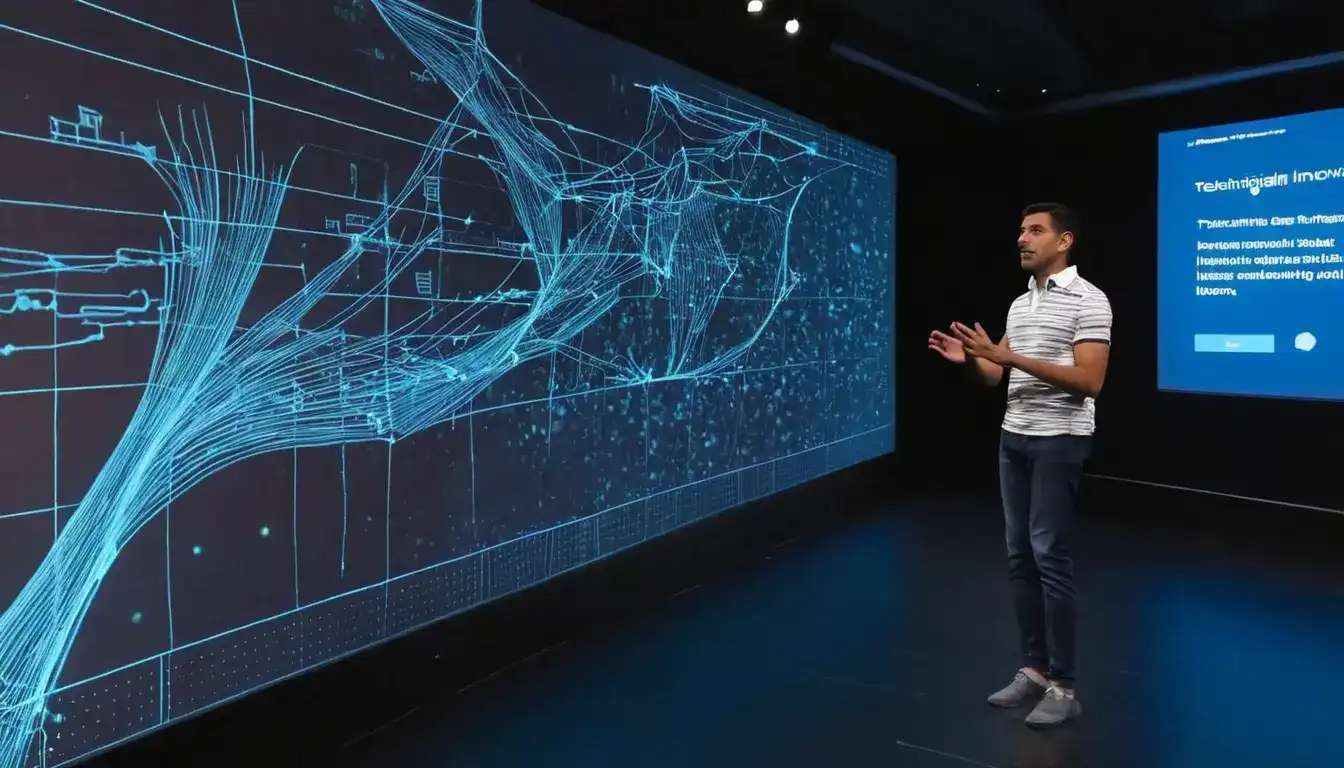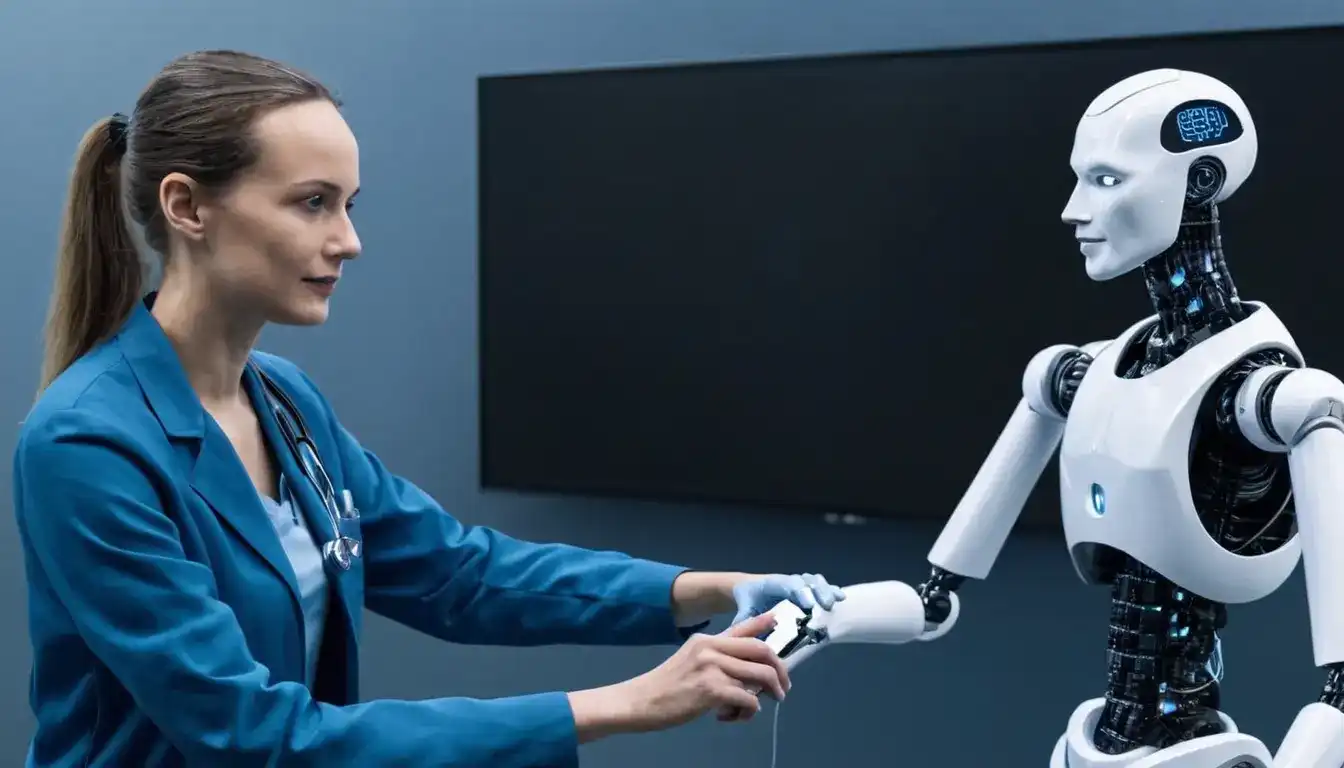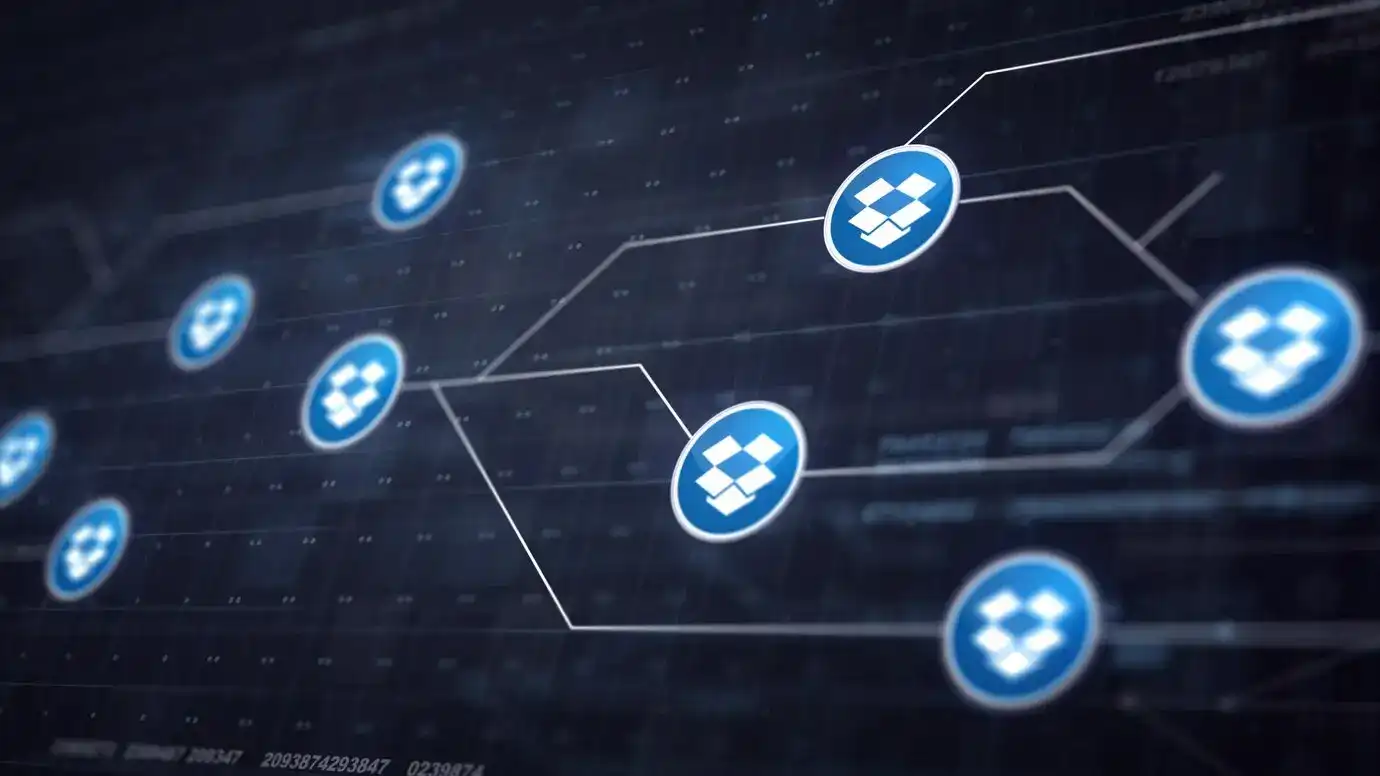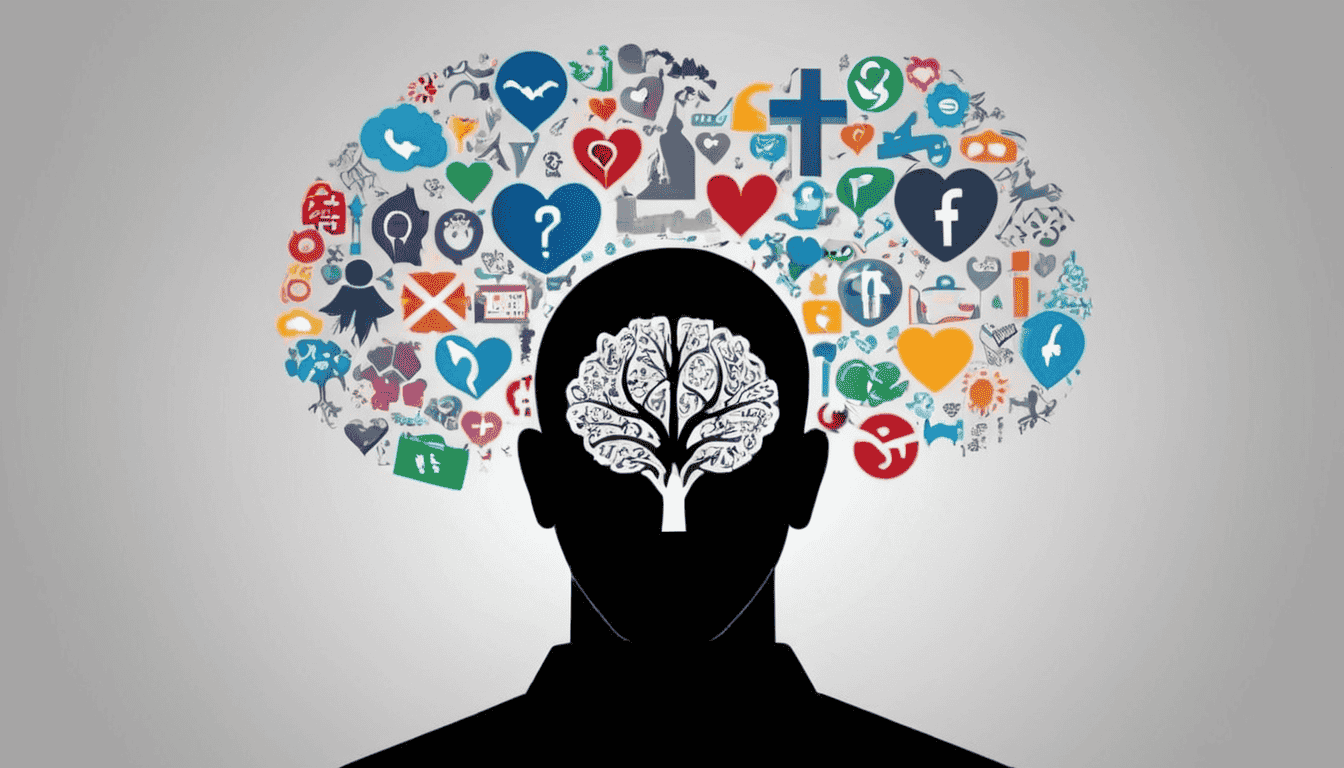Technological Innovation in Interactive Learning
Emily Willis

Photo: Technological Innovation in Interactive Learning
In recent years, technological advancements have revolutionized the landscape of education, paving the way for interactive learning experiences that are engaging, immersive, and effective. This article explores the impact of technological innovation on interactive learning, highlighting key advancements, benefits, and future trends in education.
Evolution of Interactive Learning
Interactive learning refers to an educational approach that actively engages students in the learning process through various interactive tools and technologies. Traditionally, education relied heavily on lectures, textbooks, and passive learning methods. However, with the advent of digital technologies, interactive learning has gained momentum by integrating multimedia resources, simulations, virtual reality (VR), augmented reality (AR), gamification, and personalized learning platforms.
Key Technological Innovations
1. Virtual Reality (VR) and Augmented Reality (AR)
VR and AR technologies have transformed how students perceive and interact with educational content. VR immerses students in realistic simulations and virtual environments, allowing them to explore historical sites, conduct scientific experiments, or practice skills in a safe and controlled setting. AR overlays digital information onto the real world, enhancing textbooks and classroom materials with interactive elements such as 3D models and animations.
2. Gamification
Gamification integrates game design elements into educational activities to motivate and engage students. By incorporating challenges, rewards, levels, and leaderboards, gamified learning platforms make learning more enjoyable and competitive. Students can track their progress, collaborate with peers, and develop critical thinking and problem-solving skills through interactive gameplay.
3. Personalized Learning Platforms
Advancements in artificial intelligence (AI) have enabled the development of personalized learning platforms that adapt to students' individual learning styles, preferences, and progress. These platforms use algorithms to analyze data from student interactions and provide tailored recommendations for content, exercises, and assessments. By catering to diverse learning needs, personalized learning promotes self-paced learning and improves learning outcomes.
4. Mobile Learning Apps
Mobile learning apps allow students to access educational content anytime, anywhere using smartphones and tablets. These apps offer interactive lessons, quizzes, videos, and study materials that complement traditional classroom instruction. Mobile learning promotes flexibility, convenience, and accessibility, enabling students to engage in learning activities beyond the confines of the classroom.
5. Collaborative Tools and Virtual Classrooms
Collaborative tools such as video conferencing, online discussion forums, and collaborative document editing platforms facilitate communication and collaboration among students and teachers. Virtual classrooms enable remote learning experiences where students can participate in live lectures, group projects, and interactive discussions regardless of their geographical location.
Benefits of Technological Innovation in Interactive Learning
1. Enhanced Engagement and Motivation
Interactive learning environments capture students' attention and stimulate their curiosity through interactive simulations, multimedia presentations, and gamified activities. Engaged students are more motivated to participate actively in learning activities, ask questions, and explore complex concepts with enthusiasm.
2. Improved Retention and Understanding
Interactive learning promotes active participation and hands-on experiences, which enhance information retention and comprehension. Students can visualize abstract concepts, manipulate digital models, and engage in interactive exercises that reinforce learning and deepen their understanding of subject matter.
3. Personalized Learning Experiences
Technological innovations enable personalized learning experiences tailored to individual students' needs, abilities, and learning preferences. Adaptive learning platforms adjust content difficulty, pacing, and feedback based on real-time data analytics, providing targeted support and scaffolding to maximize each student's learning potential.
4. Accessibility and Inclusivity
Digital learning resources and adaptive technologies improve accessibility for students with diverse learning styles, disabilities, or language barriers. Interactive learning tools accommodate different sensory preferences and provide alternative formats for content delivery, ensuring equitable access to educational opportunities for all learners.
5. Preparation for Future Skills
Interactive learning equips students with essential 21st-century skills such as digital literacy, critical thinking, problem-solving, collaboration, and creativity. These skills are increasingly valuable in a technology-driven society and prepare students for future academic, professional, and social challenges.
Future Trends in Interactive Learning
As technology continues to evolve, the future of interactive learning holds exciting possibilities. Emerging trends such as artificial intelligence, immersive learning experiences, blockchain for credentials and certifications, and the Internet of Things (IoT) will further transform how education is delivered and experienced. These innovations promise to make learning more personalized, engaging, and adaptive to the needs of each learner.
Conclusion
Technological innovation has ushered in a new era of interactive learning that enhances engagement, fosters collaboration, and empowers students with personalized educational experiences. From virtual reality simulations to AI-powered adaptive learning platforms, these advancements not only enrich traditional teaching methods but also prepare students for success in a rapidly evolving digital world. By embracing interactive learning technologies, educators can cultivate a dynamic and inclusive learning environment where every student can thrive and achieve their full potential. As we look to the future, continued investment in technology and innovation in education will undoubtedly shape the way we teach, learn, and interact in the years to come.
Latest ✨
View AllDiscover the essential qualities required to become a successful leader, from integrity and empathy to communication and adaptability. Learn how to develop these traits to inspire and motivate your team
Emily Willis
top digital marketing trends for 2024, including the rise of AI, the importance of user experience, video marketing dominance, influencer marketing, privacy and data security, sustainability and ethical marketing, and emerging trends like AR/VR, metaverse marketing, blockchain, and NFTs. Specific strategies are provided for leveraging AI for personalized customer experiences, enhancing user experience for mobile users, creating engaging video content, building authentic influencer partnerships, prioritizing data privacy and security, integrating sustainability and ethical practices.
Emily Willis
Europe is full of rich culture, with ten cities offering enriching cultural experiences. From the romance of Paris to the splendor of Rome and the artistic flair of Barcelona, each city has its own unique charm and heritage.
Emily Willis
Proper nutrition is essential for optimal brain function during exams. Foods rich in complex carbohydrates, lean protein, healthy fats, and hydration can help maintain energy levels and focus. Smart snack options during exams include fresh fruits, vegetables with hummus, trail mix, yogurt with granola, and dark chocolate.
Emily Willis
Business
View All
August 4, 2024
Building a Consistent and Inspiring Personal Brand Through Online PlatformsIn today's digital age, it is important to establish a strong personal brand in order to stand out in a competitive landscape. This can be done by following practical steps such as defining your brand identity, identifying your target audience, creating a compelling online presence, crafting quality content, engaging with your audience, leveraging social media effectively, networking and collaborating, monitoring and adapting, showcasing your authenticity, and seeking professional guidance if needed. Building a personal brand requires dedication, authenticity, and strategic planning, but it can lead to a memorable and influential brand that resonates with others in the digital world.
Emily Willis

August 4, 2024
Strategies for Effective Business Growth in a Competitive Marketimportance of strategic planning, innovation, and understanding market dynamics for businesses to achieve sustainable growth in a competitive market. It covers strategies such as customer focus, innovation, marketing, partnerships, financial management, technology, employee engagement, and sustainability.
Emily Willis

August 5, 2024
Tips for Choosing the Right Investment Product for Your Needsprovides guidance on investing money, starting with understanding financial goals and risk tolerance. It explains different investment options such as stocks, bonds, mutual funds, ETFs, real estate, and retirement accounts, and emphasizes the importance of diversification.
Emily Willis
Economy
View Allimpact of inflation on households and businesses, outlining the causes and consequences of rising prices. It provides strategies for both households and businesses to cope with inflation, such as budgeting, seeking deals, and negotiating with suppliers. The importance of collaboration and communication between governments, businesses, and consumers is emphasized, along with the need for long-term investments in infrastructure, skills development, and sustainable practices.
Read MoreGlobalization has a profound impact on the economies of developing countries, offering both opportunities and challenges. By increasing access to markets, facilitating technology transfer, creating jobs, and promoting cultural exchange, globalization can drive economic growth and development. However, addressing the challenges of economic inequality, loss of domestic industries, environmental impact, and cultural homogenization is essential to ensure sustainable and inclusive growth. By adopting strategic measures and fostering international cooperation, developing countries can maximize the benefits of globalization and build a brighter future
Read MoreThe digital economy has the potential to bring economic growth and innovation to developing countries, but there are several challenges that need to be addressed. These challenges include inadequate digital infrastructure, a digital divide that exacerbates inequalities, complex and outdated regulatory frameworks, cybersecurity risks, and limited access to financial services. However, there are opportunities for enhancing financial inclusion and economic growth. These opportunities include mobile and digital payments, implementing digital identification systems, e-commerce and market access, digital skills development, and public-private partnerships. By addressing these challenges and embracing the digital revolution, developing countries can unlock new opportunities for economic empowerment and inclusive growth.
Read MoreEntertainment
View All
August 5, 2024
Entertainment in Society: Social Impact, Cultural Influence, Economic ContributionsEntertainment is more than just a way to pass the time it has a significant impact on society, culture, and the economy. It promotes empathy, sparks conversations, and drives social change. It reflects and shapes cultural trends, while also preserving traditions. The entertainment industry generates jobs, contributes to economic growth, and drives technological innovation.
Emily Willis

August 4, 2024
Virtual Music Concerts: The Future of Live Performance?The music industry has seen significant changes in recent years, with virtual music concerts becoming a popular trend, especially due to the impact of the COVID-19 pandemic. Technological advancements have made virtual concerts more accessible and cost-effective, while also reducing the environmental impact of live events. However, challenges such as technical issues and the lack of physical presence remain. The future of virtual concerts may involve hybrid models that combine virtual and physical experiences, as well as continued technological innovation to enhance the quality of virtual performances. Building a sense of community and engagement will also be crucial for the success of virtual concerts moving forward.
Emily Willis

August 4, 2024
The Evolution of Streaming Services Such as Netflix, Disney+, Hulu, and the Implications for the Traditional Entertainment IndustryThe rise of streaming services has revolutionized the entertainment industry, offering on-demand access to a vast library of content through internet-connected devices. Platforms like Netflix, Disney+, and Hulu have diversified their content libraries, reshaped consumer behavior, and challenged traditional distribution models. Technological advancements have enhanced streaming experiences, while economic and cultural implications have led to global market expansion and increased investment in original content production. The future of the streaming industry will be shaped by competition, convergence of media and technology, and the need for adaptation to changing consumer preferences. Embracing digital transformation and strategic partnerships will be crucial for stakeholders in navigating the evolving landscape of modern entertainment.
Emily Willis
Health
View Allmaintaining good health and well-being through nutritional choices. A balanced diet, incorporating whole foods, staying hydrated, consuming nutrient-dense foods, managing portion sizes, practicing mindful eating, eating regular meals and snacks, considering supplements, and adopting sustainable eating practices are all highlighted as effective strategies for enhancing overall.
Emily Willis
Preventive healthcare focuses on strategies to prevent disease and maintain well-being, rather than just treating illnesses after they arise. It helps identify risk factors early on, allowing for interventions that can prevent or delay the onset of chronic diseases.
Emily Willis
significance of mental health awareness in today's fast-paced world. It discusses the importance of understanding mental health, breaking down stigma, and promoting positive mental health practices.
Emily Willis
Trending 🔥
View All
1
2
3
4
5
6
7
8
10
Lifestyle


Sports
View AllAugust 5, 2024
Sports for Social Good: Promoting Diversity, Inclusion, and Community Engagement
Read MoreTechnology
View All
August 5, 2024
Top Unity Software Development Trends to Watch in 2024
Explore the top Unity software development trends that will shape the gaming industry in 2024. From AI integration to VR/AR immersion, cross-platform reach, cloud collaboration, and mobile gaming, Unity is revolutionizing gaming experiences. Stay ahead in the dynamic world of game development with these insights.

August 4, 2024
Amidst Economic Uncertainty, Businesses Adapt and Innovate for Survival
The business world can be unpredictable, but companies can thrive by embracing adaptation and innovation. Understanding market trends, economic indicators, and global factors is crucial for charting a successful course.

August 5, 2024
The Future of Blockchain and Its Impact on Society
Blockchain technology, originally developed for cryptocurrencies like Bitcoin, has evolved into a versatile tool with the potential to revolutionize various industries beyond finance. Its decentralized and transparent nature offers solutions to challenges faced by societies worldwide. Blockchain's impact on society is poised to be transformative across multiple domains, including enhanced security, data integrity, decentralization, supply chain transparency, digital identity, and financial inclusion.

August 5, 2024
Oculus Quest 2 vs HTC Vive Pro – Which Should You Choose?
Oculus Quest 2 vs HTC Vive Pro – which VR headset reigns supreme? Dive into this ultimate showdown to discover the strengths and weaknesses of each, and decide which one is worth your investment. From specs and comfort to content and price, we'll help you make an informed choice.


















